#POST-EDSA Revolution
Explore tagged Tumblr posts
Text
Remarkable Filipino writers during POST-EDSA Revolution
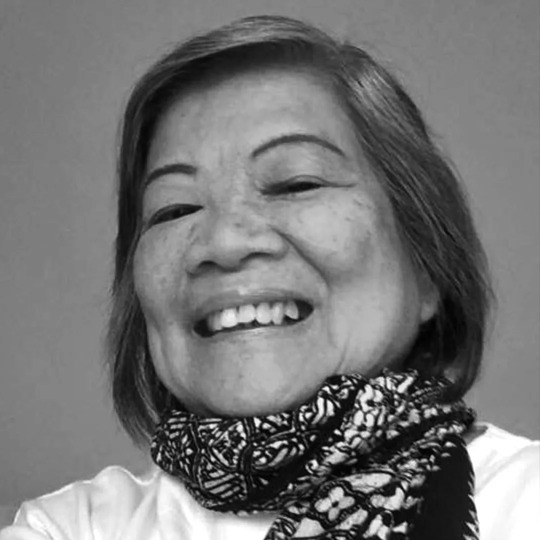
:https://www.rappler.com/tachyon/2021/02/Lilia-Quindoza-Santiago-February-16-2021-sq.jpg?resize=1080%2C1080&zoom=1
Lilia Quindiza Santiago 1949-2021
Lilia Quindoza Santiago, LQS to friends, was an award-winning writer, teacher, anthologist, literary critic, translator, and interpreter, known for her outstanding research on Philippine languages (Ilokano and Tagalog), Southeast Asian studies, popular cultures, gender and sexuality, and literature. In 1972, when the Philippines was placed under martial law by Ferdinand Marcos, she was one of the student activists rounded up, arrested, placed in detention centers, and tortured by the military. She was chosen Makata ng Taon of 1989 by the Surian ng Wikang Pambansa (now the Komisyon sa Wikang Filipino) for her powerful poem “Sa Ngalan ng Ina, ng Anak, ng Diwata’t Paraluman”.
:culturalcenter.gov.ph

:https://www.apwriters.org/wp-content/uploads/2020/11/ong-charlson.jpg
Charlson Ong 1960
Multi-awarded fictionist Charlson Ong has made significant contributions in the Philippine literature and some of which were awarded. His creativity as a writer hasn’t gone unnoticed. Some of his works received awards like the Palanca award for his short story, The Trouble in Beijing; a second-place Philippine Centennial Literary Prize for his novel, An Embarrassment of Riches; and several National Book Awards for his works across the years.
:philnews.ph
0 notes
Text
POST EDSA REVOLUTION IN THE PHILIPPINES

Photo edit: https: //pin.it/3OW6izm
The People Power Revolution, also known as the EDSA Revolution, was a series of protests and demonstrations that took place in the Philippines from February 22 to 25, 1986. The revolution was a nonviolent, popular movement that led to the overthrow of the authoritarian regime of President Ferdinand Marcos and the restoration of democracy in the country.
Background
Ferdinand Marcos, a former senator and war hero, became president of the Philippines in 1965. His presidency was characterized by corruption, human rights abuses, and the suppression of opposition groups. Marcos declared martial law in 1972, suspending the constitution and assuming near-dictatorial powers. Under martial law, thousands of Filipinos were arrested, tortured, or killed for their political beliefs. The country's economy suffered as well, with rampant corruption and cronyism leading to widespread poverty and inequality. Opposition to Marcos' regime grew throughout the 1970s and 1980s, as Filipinos became increasingly disillusioned with his leadership. Catholic bishops and priests were particularly vocal in their criticism of the regime, with many speaking out against the violence and repression inflicted upon their parishioners. International pressure on Marcos also mounted, as foreign governments and human rights groups condemned his record on human rights and democracy.
The Revolution
The EDSA Revolution began on February 22, 1986, when a group of military officers led by Defense Minister Juan Ponce Enrile and Lieutenant General Fidel Ramos declared their withdrawal of support from Marcos. The officers set up a makeshift headquarters at the Camp Aguinaldo military base in Quezon City and called on Filipinos to join them in their opposition to the regime.Word of the military rebellion quickly spread throughout the country, and Filipinos began to gather at EDSA, a major highway in Manila, to support the rebels. The protestors, which included ordinary citizens, students, religious groups, and members of the opposition, set up barricades and formed human chains to block government troops from reaching the rebels' stronghold at Camp Aguinaldo.The situation was tense, with the possibility of violence hanging in the air. However, the protestors remained peaceful and determined, singing patriotic songs, praying, and offering food and water to the soldiers stationed at EDSA. The movement grew in strength and numbers over the next few days, with estimates of the crowd ranging from hundreds of thousands to over a million people. The turning point of the revolution came on February 25, when Marcos ordered his troops to disperse the protestors and storm Camp Aguinaldo. However, the soldiers refused to obey his orders, and instead joined the protestors in their call for Marcos to step down. Marcos, sensing that he had lost the support of the military and the people, fled the country with his family on a US military aircraft bound for Hawaii. The EDSA Revolution was a historic moment in Philippine history, marking the end of the Marcos regime and the beginning of a new era of democracy and freedom. Corazon Aquino, the widow of opposition leader Benigno Aquino Jr., was sworn in as president on February 25, 1986, becoming the first female president of the Philippines.
Aftermath
Aquino's presidency was marked by challenges, including a series of coup attempts by loyalists of the Marcos regime, as well as natural disasters and economic problems. However, her government was able to enact important reforms, such as the restoration of civil liberties and the drafting of a new constitution that limited the power of the presidency and strengthened democratic institutions. Today, the EDSA Revolution is celebrated as a symbol of Filipino people power and resilience. It serves as a reminder of the importance of democracy and the struggle for human rights and freedom in the Philippines and around the world.
Reference:
Abihales, P.N., & Amoroso, D.J (2017) state and society in the Philippines. Rowman & little field Publishers.
Mccoy, A.W.(2018). In the shadow of the EDSA Revolution: Democracy and economic crisis in the Philippines. University of Wisconsin Press.
2 notes
·
View notes
Text
2 REMARKABLE WRITERS IN POST-EDSA REVOLUTION:
-Magno "Carlo" Jose Caparas (born December 15, 1958), widely known as Carlo J. Caparas, is a Filipino comic strip creator/writer-turned director and producer.
-Who is best known for creating such Filipino superheroes and comic book characters as Panday, Bakekang, Totoy Bato, Joaquin Bordado, Kamagong, Kamandag, Elias Paniki, Tasya Fantasya, Gagambino, Pieta and Ang Babaeng Hinugot Sa Aking Tadyang, among others.

-Gilda Olvidado (born 9 August 1957 in Cebu City, Cebu[1]) is a Filipina movie and television writer, and melodrama novelist. Her novels have been turned into live-action movies by VIVA Films, and also been remade for television through Sine Novela.
-The Filipino telenovelas Babangon Ako't Dudurugin Kita (2008), Dapat Ka Bang Mahalin (2009), Kung Mahawi Man ang Ulap (2007), and Sinasamba Kita (2007) were co-written by Olvidado. She co-wrote melodrama television programs including Kaputol ng Isang Awit (2008) and My Only Love (2007–2008).

Photo credit/reference: Wikipedia contributors. (2023b). Carlo J. Caparas. Wikipedia. https://en.wikipedia.org/wiki/Carlo_J._Caparas
Wikipedia contributors. (2022b). Gilda Olvidado. Wikipedia. https://en.wikipedia.org/wiki/Gilda_Olvidado
6 notes
·
View notes
Text
POST EDSA REVOLUTION CONTRIBUTION IN THE PHILIPPINE LITERATURE

The fall of the Marcos dictatorship in 1986 marked a turning point in contemporary Philippine literature, as writers gained greater freedom to express themselves. Writing during the Martial Law regime was characterized by militancy and belligerence, derived from the political culture of the underground national democratic movement. After the regime fell, the literary scene became disoriented, resulting in a proliferation of concerns taken up by individual writers and groups. However, the emergence of creative writing centers and writers' organizations, as well as the creation of the National Commission for Culture and the Arts in 1992, helped to provide support for writers and foster a "national literature." Non-governmental organizations also played a role in recognizing writers from specific sectors of society. Campus publications provided another outlet for non-traditional, experimental writing. Post-EDSA literature is characterized by an emerging critical orientation, adventurousness in publishing, and a focus on the retrieval and recuperation of writing in Philippine languages. Contemporary literature uses English and Filipino as major media, and explores themes ranging from socio-political discussions to personal thoughts and feelings. Literature is a venue for the search for identity, as well as the exploration of issues like human rights violations, the experiences of overseas Filipino workers and migrants, and the effects of poverty and power dynamics. The post-EDSA revolution contributed significantly to the development of Philippine literature, creating an environment where writers could tackle a wide range of subjects reflecting the socio-political realities of the country. Overall, the post-EDSA literary scene is marked by an adventurous and critical spirit, with an emphasis on exploring a wide range of issues and using literature as a tool for self-expression and social commentary.
Reference:
Philippine Literature After EDSA Revolution. (n.d.). https://www.slideshare.net/JessPalo1/litt-1-report
Photo source: https://en.m.wikipedia.org/wiki/File:EDSA_Revolution_pic1.jpg
3 notes
·
View notes
Text
Period of Post Edsa 1 Revolution
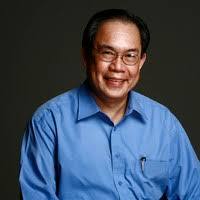
Photo Credit: https://up-diliman.academia.edu/JoseDalisay/CurriculumVitae
Jose Dalisay Jr., usually referred to as Butch Dalisay, is a professor, writer, and journalist from the Philippines. His short tales, essays, and novels are best recognized for frequently addressing identity, politics, and historical topics. "Killing Time in a Warm Place" and "Soledad's Sister" are a couple of his best-known works. Dalisay has won numerous accolades for his literature, including the Palanca Award, the Philippines' most esteemed literary honor. He is a member of the Order of National Artists for Literature in the Philippines.

Photo Credit:https://suripanitik.wordpress.com/2017/09/03/edgardo-m-reyes/
Filipino novelist, essayist, and short story writer Edgardo M. Reyes rose to fame for his works that highlighted the difficulties faced by common Filipinos. On July 7, 1937, he was born in Sta. Mesa was born in Manila and raised in Tondo and Santa Cruz, two working-class areas. Reyes was renowned for his graphic depictions of the social and economic problems, such as persecution, injustice, and poverty, that the underprivileged experience in Philippine society. His writings dealt with issues of identity, love, and atonement. "Maynila, sa mga Kuko ng Liwanag," a novel that depicts the harsh reality of life in Manila's slums and the difficulties of its urban poor, is one of his most well-known works. "Sa mga Kuko ng Liwanag" is another noteworthy piece.
3 notes
·
View notes
Text

Literary Period After EDSA1986 - Present
The year 1986 marks a new beginning of a new scene for Filipino writers and artists. It saw the downfall of late President Ferdinand Marcos when he placed the Philippines under martial rule last September 21,1972. This action does not only oppress the writers' right to free expression but also created conditions that made collaboration and cooperation convenient choices for artists' struggling for recognition and survival. Furthermore, the growth of underground writing was created both in urban and in the countryside.
The popular "Edsa Revolution" (EDSA, a highway in Metro Manila that runs north to south from Caloocan to Baclaran) has paved the way for the flight of the dictator and his family to Hawaii, USA on February 24,1986. The revolt established the presidency of Corazon Aquino, which marked the "restoration" of a pre-Martial Law society. However, the Philippines did not recover that easily. The years that followed "Edsa" was a wild "roller-coaster" ride for many Filipinos. The unease times was caused by natural disasters that left the economic plans in shambles.
Militancy and belligerence best describes writing under the Martial Law regime. With the overthrow of the enemy in 1986, however, the literary activity showed certain disorientation manifesting itself in a proliferation of concerns taken up by individual writers and groups.
Creative writing centers after Edsa maybe grouped into two. Academic institutions where Creative Writing is part of the curricular offerings, and students majoring in Literature are able to come in contact with elder creative writers/critics/professors belonged to the first group. Such academic institutions includes the Silliman University; the University of the Philippines; the Ateneo de Manila University; De la Salle University; and last but not the least, San Carlos University in Cebu.
The second group is composed of writers' organizations that periodically sponsor symposia on writing and/or set up workshops for its members and other interested parties. UMPIL (Unyon ng mga Manunulat ng Pilipino), PANULAT (Pambansang Unyon ng mga Manunulat), Panday-Lipi, GAT (Galian sa Arte at Tula), KATHA, LIRA (Linangan sa Imahen, Retorika at Anyo), GUMIL (Gunglo Dagiti Mannurat nga Ilokano), LUDABI (Lubas sa Dagang Binisaya) and P.E.N.
Writers get to hear about new developments in writing and derive enthusiasm for their craft through these twin centers. The two "unyon" function as umbrellas under which writers belonging to a diversity of organizations socialize with fellow writers.
Award giving bodies, annual competitions and publications provide the incentives for writers to keep producing. These actions perform the important service of keeping the writers in the public consciousness, making it possible for commentators and audiences to identify significant established writers and give attention to emerging new talents.
The National Commission on Culture and the Arts (NCCA), a post-EDSA state sponsored institution, was created by the law in 1992, superseding the Presidential Commission on Culture and the Arts which was established in 1987. The said institution has a Committee on Literary Arts which funds workshops, conferences, publications and a variety of projects geared towards the production of a "national literature". The committee has the aim of developing writing that is multi-lingual, multi-cultural, and truly national.
Non-governmental organizations have helped hand in hand with some institutions in giving recognition to writers from specific sectors in the society. These NGO's includes the Amado V. Hernandez Foundation; the GAPAS foundation, and the KAIBIGAN.
Campus publications are another group of outlet that is of importance as a source of non-traditional, experimental writing. These campus publications could either be a weekly student newspapers, quarterly magazines, or annual literary journals. The University of the Philippines has the Collegian; The Diliman Review; and The Literary Apprentice. Silliman University has Sands and Coral; Ateneo de Manila University issues Heights and Philippine Studies; De la Salle University has Malate, Likha, and Malay to offer; University of Santo Tomas publishes The Varsitarian.
Overall, the character of the Philippine literary scene after "EDSA" maybe pinpointed be referring to the theories that inform literary production, to the products issuing from the publishers, to the dominant concerns demonstrated by the writers' output, and to the direction towards which literary studies are tending.
1. There is in the academe an emerging critical orientation that draws its concerns and insights from literary theorizing current in England and the United States.
2. Post-EDSA publishing has been marked by adventurousness, a willingness to gamble on "non-traditional" projects.
3. The declining prestige of the New Criticism, whose rigorous aesthetic norms has previously functioned as a Procrustean bed on which Filipino authors and their works were measured, has opened a gap in the critical evaluation of literary works.
4. The fourth and final characteristic of post-EDSA writing is the development thrust towards the retrieval and the recuperation of writing in Philippine languages other than Tagalog.
Reference: Angelfire.lycos.com
https://www.angelfire.com › litera1
Literary Periods - After EDSA
2 notes
·
View notes
Text
POST EDSA REVOLUTION
Carlo Magno Jose Caparas (born December 15, 1948) is a Filipino comic strip creator and writer-turned film director and producer. He is best known for creating such Filipino superheroes and comic book characters as Panday, Bakekang, Totoy Bato, Joaquin Bordado, Kamagong, Kamandag, Elias Paniki, Tasya Fantasya, Gagambino, Pieta and Ang Babaeng Hinugot sa Aking Tadyang, among others. He is also known as a director of numerous massacre films such as Kuratong Baleleng and The Cory Quirino Kidnap: NBI Files.
Reference:https://dbpedia.org/page/Carlo_J._Caparas

0 notes
Text
“POST- EDSA 1 REVOLUTION"
Jose Y. Dalisay was born in Romblon in 1954. He completed his primary education at La Salle Green Hills, Philippines in 1966 and his secondary education at the Philippine Science High School in 1970. He dropped out of college to work as a newspaper reporter. He also wrote scripts mostly for Lino Brocka, the National Artist of the Philippines for Theater and Film. Dalisay returned to school and earned his B.A. English (Imaginative Writing) degree, cum laude from the University of the Philippines in 1984. He later received an M.F.A. from the University of Michigan in 1988 and a PhD in English from the University of Wisconsin–Milwaukee in 1991 as a Fulbright scholar.

PHOTOcredit: Wikipedia
https://en.m.wikipedia.org/wiki/Jose_Dalisay_Jr.
Nicomedes "Nick" Marquez Joaquin (Tagalog: [hwaˈkin]; May 4, 1917 – April 29, 2004) was a Filipino writer and journalist best known for his short stories and novels in the English language. He also wrote using the pen name Quijano de Manila. Joaquin was conferred the rank and title of National Artist of the Philippines for Literature. He has been considered one of the most important Filipino writers, along with José Rizal and Claro M. Recto. Unlike Rizal and Recto, whose works were written in Spanish, Joaquin's major works were written in English despite being a native Spanish speaker.

PHOTOcredit: Goodreads
https://www.goodreads.com/author/show/74757.Nick_Joaqu_n
1 note
·
View note
Text
ARTICLE ABOUT POST EDSA REVOLUTION CONTRIBUTION IN THE PHILIPPINE LITERATURE

In the Philippines, most notably in Manila, EDSA Revolution was a series of major public demonstrations. Against regime violence and electoral fraud, there was an ongoing campaign of Civil Resistance. The nonviolent revolution, which ended Fedinand Marcos's 20 year term as president and restored democracy in the Philippines, led to his departure. The beginning of a new era in contemporary Philippine literature was marked by the year 1986. When President Marcos imposed martial law on the Philippines, it not only suppressed the right of writers to freedom of expression, but also created conditions conducive to collaboration and cooperation that made it easy for artists struggling for recognition and survival. Writing under the Martial law Regime was characterized militancy and belligerence , even when itshowed up in the legal press. In particular, following the assassination of Ninoy Aquino in 1983;
References:
https://www.rappler.com/newsbreak/iq/51527-edsa-revolution-trivia/
https://www.scribd.com/document/479194259/POST-EDSA-LITERATURE-docx
0 notes
Text

Photo edit:
AMADO HERNANDEZ
Amado Hernandez (1903-1970) was a Filipino writer and activist who is considered one of the most important figures in Philippine literature. He was born in Hagonoy, Bulacan, Philippines and became involved in social and political issues at a young age.
Hernandez is best known for his novel "Mga Ibong Mandaragit" (Birds of Prey), which tells the story of a group of Filipino peasants struggling against a wealthy landowner. The novel is considered a masterpiece of Philippine literature and has been translated into several languages.
Hernandez was also a prominent labor leader and communist activist. He was arrested and imprisoned multiple times for his political activities, and his experiences in prison influenced much of his writing. Despite his imprisonment, he continued to write and publish his work.Hernandez's other notable works include the short story collection "Luha ng Buwaya" (Crocodile Tears) and the poem "Isang Dipang Langit" (A Stretch of Sky).He died in 1970, but his legacy lives on as a writer and an activist who fought for the rights of the poor and oppressed in the Philippines
1 note
·
View note
Text
"ARTICLE ABOUT POST EDSA REVOLUTION "
The People Power Revolution, also known as the EDSA Revolution or February Revolution, was a series of popular demonstrations in the Philippines from February 22 to 25, 1986. It was a nonviolent campaign of civil resistance against regime violence and electoral fraud, leading to the departure of Ferdinand Marcos and the end of his 20-year dictatorship. Hundreds of thousands of people filled up Epifanio de los Santos Avenue (EDSA) facing northbound towards the Boni Serrano Avenue–EDSA intersection.The Yellow Revolution was a symbol of protest following the assassination of Filipino senator Benigno "Ninoy" Aquino, Jr. in August 1983. It was widely seen as a victory of the people against two decades of presidential rule by President Marcos, and made news headlines as "the revolution that surprised the world". The majority of the demonstrations took place on Epifanio de los Santos Avenue, more commonly known by its acronym EDSA, in Metro Manila from February 22 to 25, 1986. The protests, fueled by the resistance and opposition after years of governance by President Marcos and his cronies, ended with the ruler, his family, and some of their supporters fleeing to exile in Hawaii; and Ninoy Aquino's widow, Corazon Aquino, inaugurated as the eleventh President of the Philippines.

Photo credit/reference: Wikipedia contributors. (2023b). People Power Revolution. Wikipedia. https://en.m.wikipedia.org/wiki/People_Power_Revolution
3 notes
·
View notes
Text

Photo Credit: https://www.rappler.com/newsbreak/iq/people-power-philippines-world-bright-spot-1986/
"The Emergence of Contemporary Writers in Post-EDSA Revolution Philippines".
The period after the EDSA revolution in the Philippines saw the emergence of a fresh cohort of writers who addressed contemporary concerns and challenges. These writers tackled themes such as democracy, social justice, human rights, and national identity. Some of the prominent writers from this era were Jose Dalisay Jr., Ninotchka Rosca, Jose F. Lacaba, Bienvenido Lumbera, and Lualhati Bautista. Through their works, they conveyed the experiences of Filipinos during the post-EDSA era and their writings offer valuable perspectives on the intricate issues that continue to influence Philippine society at present.
Reference: https://www-manilatimes-net.cdn.ampproject.org/v/s/www.manilatimes.net/2023/02/25/opinion/columns/edsa-1-a-revolution/1880137/amp?amp_gsa=1&_js_v=a9&usqp=mq331AQIUAKwASCAAgM%3D#amp_tf=From%20%251%24s&aoh=16830937649940&referrer=https%3A%2F%2Fwww.google.com&share=https%3A%2F%2Fwww.manilatimes.net%2F2023%2F02%2F25%2Fopinion%2Fcolumns%2Fedsa-1-a-revolution%2F1880137
2 notes
·
View notes
Text

2 remarkable writers in different period and their contribution.
Period of Activism:
Lualhati Bautista - is a Filipino writer and feminist who wrote about the struggles of women and marginalized sectors during the Martial Law era. Her most famous work, Dekada '70, is a novel about a middle-class family's experiences during the Martial Law period.
Jose "Pete" Lacaba - is a Filipino writer, journalist, and activist who wrote about the social and political realities of the Philippines during the Martial Law period. His most famous work, Days of Disquiet, Nights of Rage, is a collection of poems and essays that document the protests and political repression of the era.
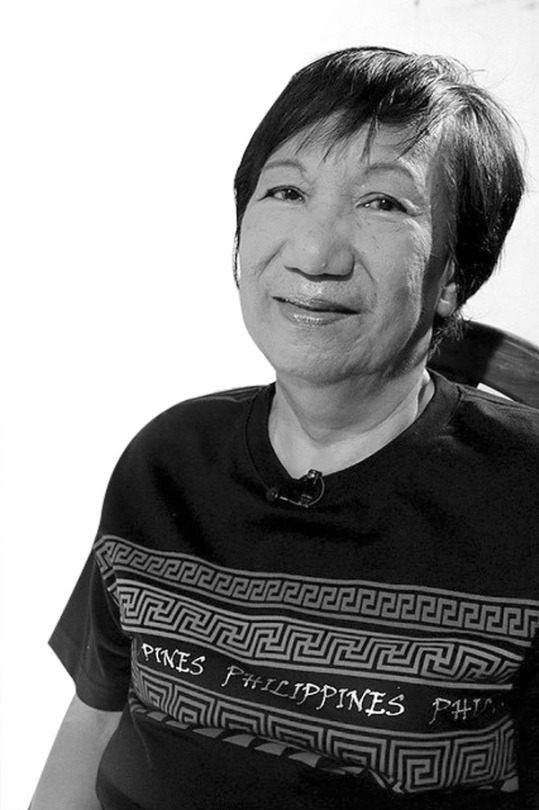
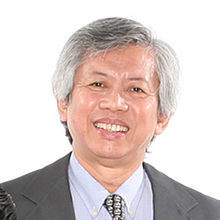
Period of New Society (1972-1986):
Jose Garcia Villa - He was a poet, short story writer, and literary critic who was known for his distinctive use of punctuation, which he called "comma poems". Villa's literary contributions during the period of the New Society include his collection of poems entitled "Selected Poems and New" and his book "Doveglion: Collected Poems".
Nick Joaquin - He was a prolific writer and journalist who wrote novels, plays, essays, and short stories. Joaquin's literary contributions during the period of the New Society include his novel "The Aquinos of Tarlac: An Essay on History as Three Generations", which explores the history of the Aquino family, and his collection of essays entitled "Culture and History".
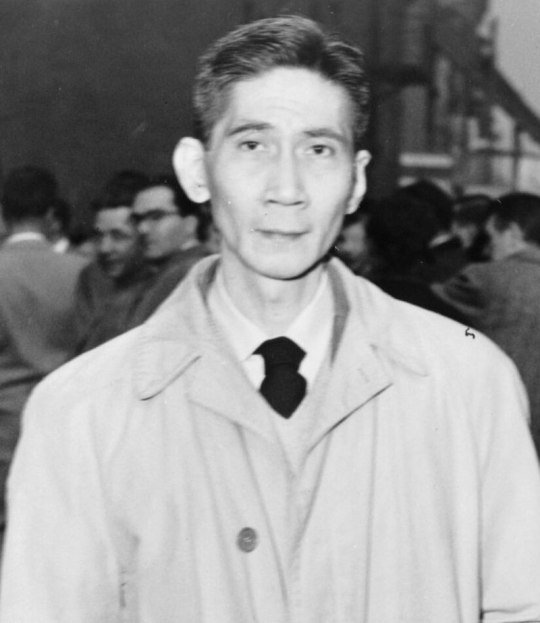

Period of Third Republic (1965-1972):
N.V.M. Gonzalez - He was a writer and critic who wrote novels, short stories, and essays. Gonzalez's literary contributions during the period of the Third Republic include his novel "The Bamboo Dancers" and his collection of essays entitled "The Novel of Justice: Selected Essays 1968-1994".
Francisco Arcellana - He was a poet, essayist, and short story writer. Arcellana's literary contributions during the period of the Third Republic include his collection of short stories entitled "The Mats" and his novel "Selected Poems".
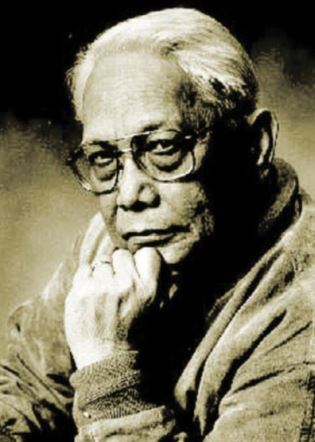
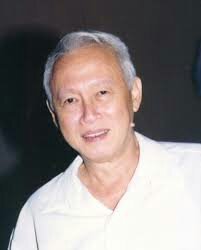
Post-EDSA 1 Revolution (1986-present):
F. Sionil Jose - He is a novelist and essayist who is best known for his series of novels collectively called "The Rosales Saga". Jose's literary contributions after the EDSA 1 Revolution include his novel "Po-on" and his collection of essays entitled "In Search of the Word: Selected Essays".
Jessica Hagedorn - She is a novelist, playwright, and poet who is known for her works that explore the experiences of Filipino immigrants in the United States. Hagedorn's literary contributions after the EDSA 1 Revolution include her novel "Dogeaters" and her play "The Gangster of Love".
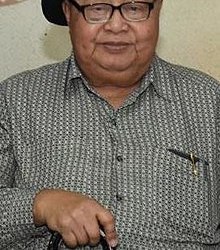
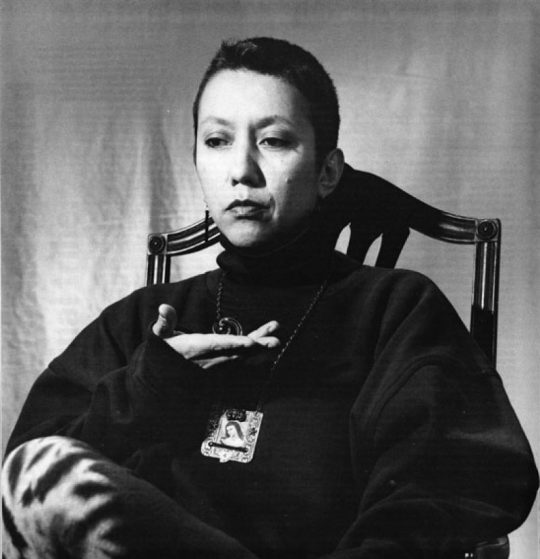
3 notes
·
View notes
Text
Nicomedes "Nick" Marquez Joaquin (Tagalog: May 4, 1917 – April 29, 2004) was a Filipino writer and journalist best known for his short stories and novels in the English language. He also wrote using the pen name Quijano de Manila. Joaquin was conferred the rank and title of National Artist of the Philippines for Literature. He has been considered one of the most important Filipino writers, along with José Rizal and Claro M. Recto. Unlike Rizal and Recto, whose works were written in Spanish, Joaquin's major works were written in English despite being a native Spanish speaker.
Reference:
https://en.m.wikipedia.org/wiki/Nick_Joaquin

0 notes
Text
"ARTICLE ABOUT POST EDSA REVOLUTION CONTRIBUTION IN THE PHILIPPINE LITERATURE”
Millions of Filipinos from all walks of life came together for the 1986 EDSA People Power Revolution to march along Epifanio de los Santos Avenue (EDSA), the main thoroughfare in Metro Manila, in an effort to overthrow President Ferdinand E. Marcos' tyranny and usher in a new era of genuine freedom and democracy. This movement's spirit was not limited to Manila; it appeared in non-violent protests held in many towns around the country. It was a revolution distinguished by its non-violent methods, led by a nation united to recapture liberty. The events of February 25, 1986, changed the direction of the history of our country and demonstrated to the rest of the world the extraordinary tenacity of the Filipino people. It ushered in a time of tranquility.

PHOTOcredit: RAPLER
1 note
·
View note
Text
ARTICLE ABOUT POST EDSA REVOLUTION CONTRIBUTION IN THE PHILIPPINES LITERATURE
1986 EDSA REVOLUTION
•The year 1986 democrats the beginning of the new scene in the unfolding narrative of contemporary Philippine Literature
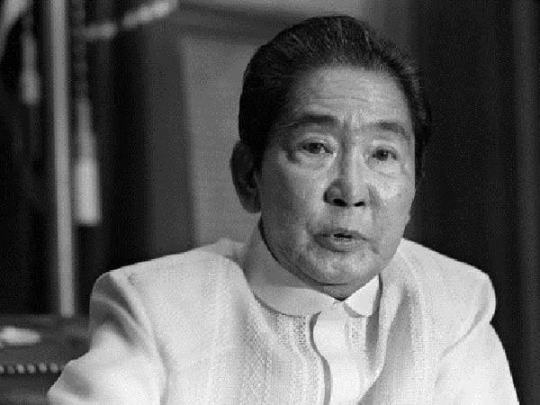
The year 1986 demarcates the beginning of the new scene in the unfolding narrative of contemporary Philippine literature.
It saw the fall of the dictatorship that President Marcos set up on September 21, 1972, when he placed the Philippines under martial rule, initiating a regime that did not only suppress the writer's right to free expression but also created conditions that made collaboration and cooperation convenient choices for artists struggling for and survival.
However, when the enemy were overthrown in 1986, the literary activity showed a certain disorientation manifesting itself in a proliferation of concerns taken up by individual writers and groups.
4 notes
·
View notes